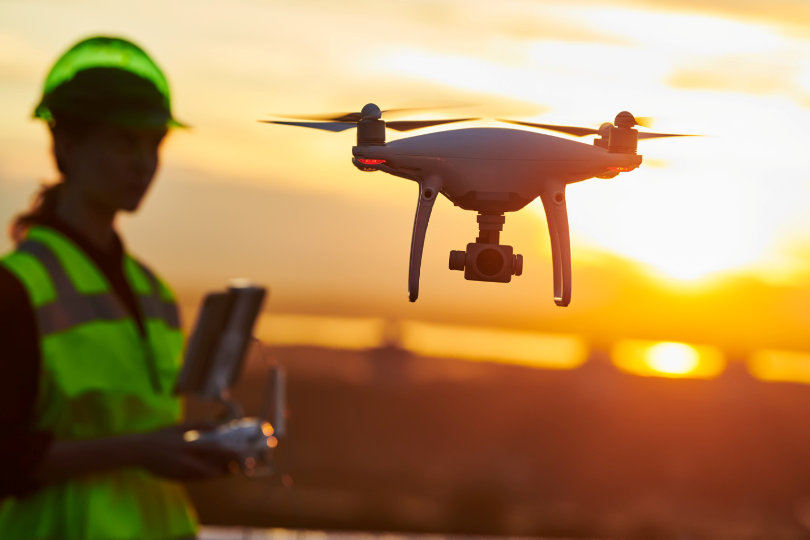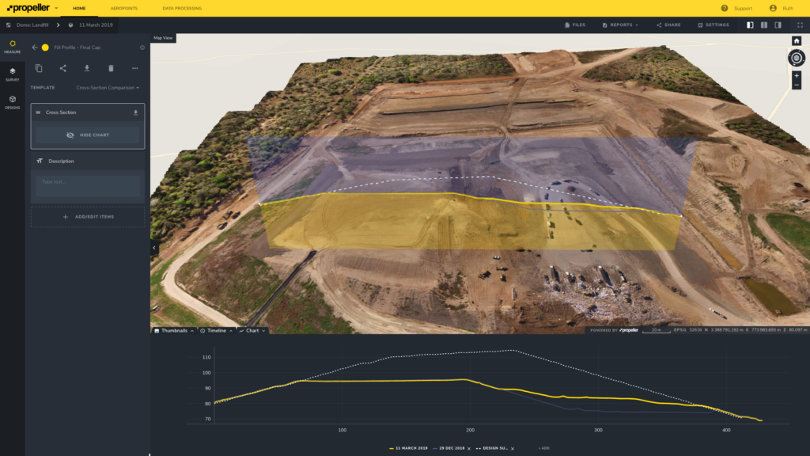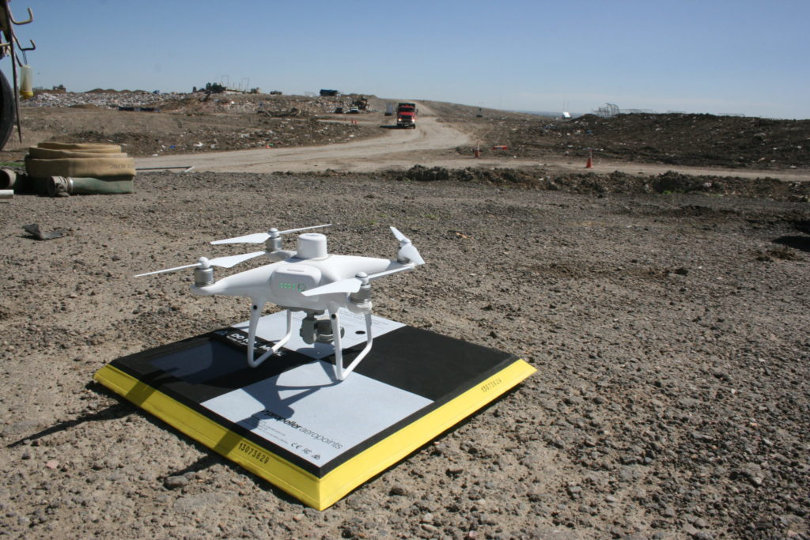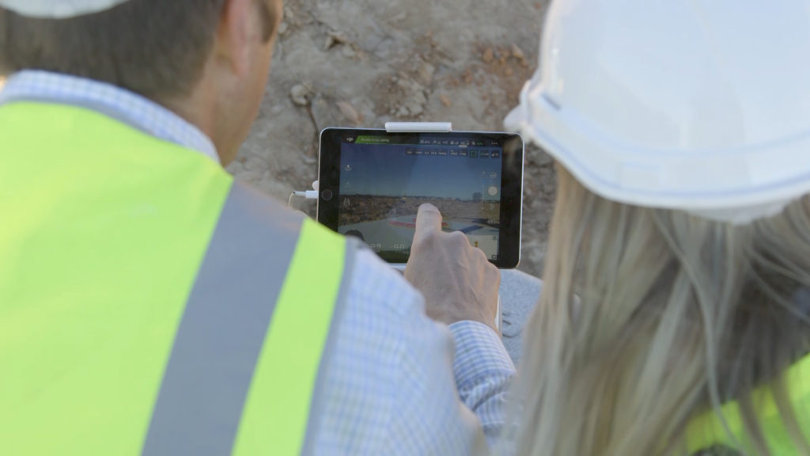Construction has historically lagged behind other industries when it comes to adopting the latest tech. But that’s all about to change, thanks to advances in technology like UAV (unmanned aerial vehicle) surveys, also known as drone surveys. Combined with the latest RTK-enabled drone hardware, drone mapping software (like the kind at Propeller Aero) and drone photogrammetry are literally changing the landscape of worksites worldwide.

It’s not a question of if this technology will replace traditional base and rover surveying techniques. It’s a question of when. At Propeller Aero, the mission is to put user-friendly, accurate technology into customers’ hands.
If you’re not familiar with drone surveying or drone management technology yet, here’s how it works. GPS-enabled drones fly over a worksite and capture thousands of images. With enough overlapping images (and the right software), you can generate 3D maps of physical terrain accurate to 1/10 foot.

Using drones to survey worksites might sound new, but there are lots of success stories already out there. Which means that investing in drones for your worksite isn’t a risk; it’s a sensible strategy with proven ROI.
Depending on how often you fly and the nature of your worksite, a drone survey program can even pay for itself in a single flight!
With all that value to be had, there’s no reason to wait. Here are our top three reasons why now is the right time to invest in a drone surveying program on your worksites.
Reason #1: Affordability
In 2020, we surveyed over 200 professionals in all areas of earthwork. We asked them about the obstacles they encounter every day, how they decide if a project was successful, and what role drones play on their worksites (if any).
Many of them had a successful drone program already. Those who hadn’t yet invested believed that ramping up a UAV surveying workflow would be cost-prohibitive.
But that’s a false economy. For one thing, there are several high-quality RTK-enabled drones on the market today—none of which will break the bank.
With nothing but a single drone and a smart ground control point like Propeller’s AeroPoints, you can collect highly accurate data in a fraction of the time it would take to survey with a base and rover. For comprehensive analysis, integrating this aerial data with a ground gravity survey enhances the understanding of subsurface conditions.
What that means for your on-site teams is safer, more frequent surveys, labor optimization (which saves money), and better decisions based on real-time data. The question isn’t whether you can afford to invest, but whether you can afford not to.
(But don’t take our word for it—check out these cost overrun statistics.)

Propeller customer Grade Tech estimated that, between the time savings offered by drone surveys and the mistakes these surveys prevent, they’re saving $3,500 or more with every flight.
Reason #2: Reliability
Propeller PPK is the workflow of choice for earthwork professionals worldwide, and we’re expanding into additional drone hardware to make our PPK drone surveying solution even better.
If you think of drones as glorified toys for hobbyists, think again. With onboard RTK technology, drones mean serious business when it comes to earthwork surveying.
These drones are fast, accurate, and easy to fly. And because anyone can earn a Part 107 license, you don’t need a surveyor on-site every time you want to measure material quantities or track progress.
Speed and accuracy have finally united for a plug-and-play flight experience. With drones on the scene, there’s no need to call a surveyor to a site every time you want quantities measured or progress tracked.
Aerial-optimized, high-resolution, wide-angle lenses guarantee clear photos every time you fly, and the onboard GPS unit communicates with a stationary base for geotags accurate to 1/10 foot.
The bottom line? Today’s drones just work, with no need for boots on the ground at a busy or dangerous worksite.
Reason #3: Accuracy
The biggest sticking point for earthwork companies on the fence about whether to use drones? Survey accuracy.
And as fate would have it, accuracy is where Propeller’s PPK workflow really shines.
Combining an RTK-enabled drone with AeroPoints makes centimeter-grade accuracy the norm, and in a fraction of the time it would take with a base and rover.

RTK stands for “real-time kinematic” and refers to an onboard sensor that geotags every image captured by the drone’s camera. Even on remote or busy worksites, these RTK drones combine with Propeller’s PPK workflow to effectively turn every image into its own ground control point.
So 1/10ft (3cm) accuracy isn’t just possible—it’s consistent.
In 2021 and beyond, can you afford NOT to have a drone survey program?
Today, more earthwork companies than ever use drones to help them win bids, improve communication, keep projects on track, and yes—even shore up that bottom line.
Drone use on worksites continues to rise exponentially year over year, and the companies that are slow to adapt will get left behind.




